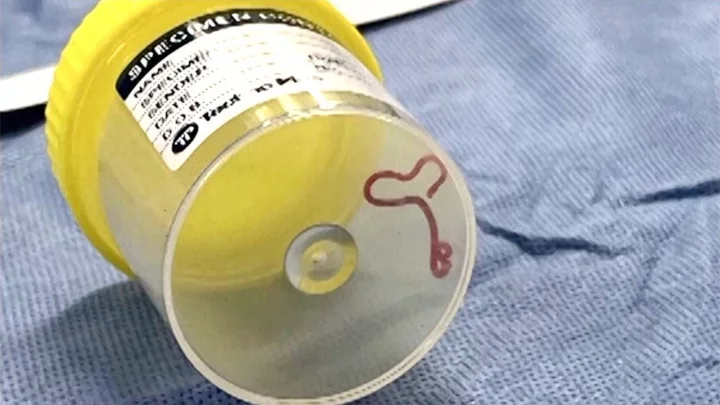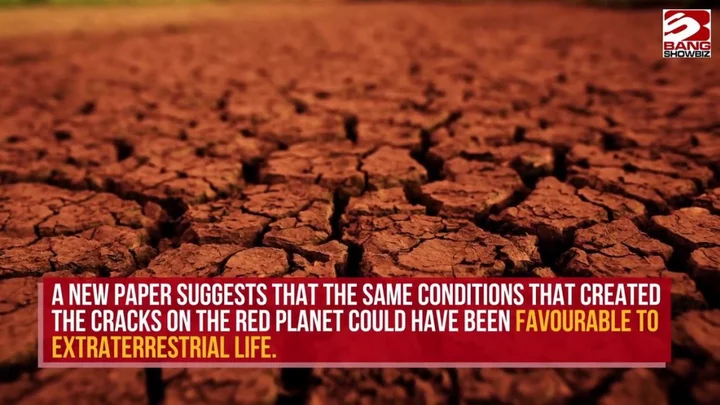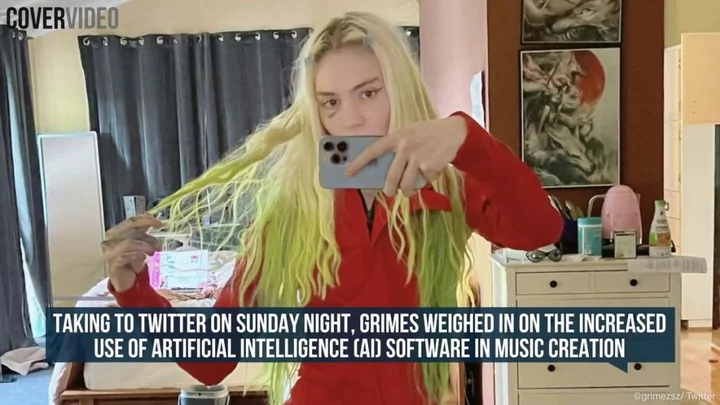
Wild boar in Germany are strangely radioactive – now scientists know why
Wild boar in southeastern Germany have long contained high levels of radioactive substances, which has been attributed to the 1986 Chernobyl nuclear disaster. But as radioactivity levels have fallen in other animals, they have stayed much the same among boar. Now, scientists have worked out the secret behind the so-called “wild boar paradox”. Research shows there is another culprit for the high levels of radioactivity: nuclear weapons tests from the mid-20th century. And both the weapons and the nuclear reactor meltdown continue contaminating the boar because of their diet. While the muscular boar seem healthy, the dangerous levels of radioactive caesium, the main contaminator, have prompted people to stop hunting them. In turn, there is now an overpopulation issue. “Our work reveals deeper insights into the notorious radio-cesium contamination in Bavarian wild boars beyond the total radionuclide quantification only,” radioecologist Felix Stäger from Leibniz University Hannover wrote in a paper. After a nuclear incident, radioactive materials can pose a significant threat to ecosystems. This happened after the Chernobyl meltdown in 1986, where there was an increase in radioactive caesium contamination. The main component of this, caesium-137, has a half-life of about 30 years, meaning it loses its radioactivity fairly quickly. However, caesium-135, which is created via nuclear fission, is far more stable. It has a half-life of more than 2m years. The ratio of cesium-135 compared to cesium-137 can help us work out where the cesium came from. A high ratio indicates nuclear weapon explosions, while a low ratio points to nuclear reactors like Chernobyl. So the researchers analysed caesium levels from 48 wild boar meat samples from 11 regions of Bavaria. It turns out that nuclear weapons testing was responsible for between 12 per cent and 68 per cent of the unsafe contamination in the samples. “All samples exhibit signatures of mixing,” wrote the researchers. “Nuclear weapons fallout and [Chernobyl] have mixed in the Bavarian soil, the release maxima of which were about 20−30 years apart.” So while Chernobyl remains the main source of caesium in wild boar, about a quarter of the samples showed enough contributions from weapons fallout to exceed safety limits even before the reactor meltdown comes into account. And because wild boar eat so many truffles, it has been exacerbated. The fungus absorbs high levels of contamination from both sources. Wild boars' diets, which include underground truffles, have absorbed varying levels of contamination from both sources, which has contributed to the animals' persistent radioactivity. “This study illustrates that strategic decisions to conduct atmospheric nuclear tests 60−80 years ago still impact remote natural environments, wildlife, and a human food source today,” the authors concluded. The study was published in Environmental Science & Technology. Sign up to our free Indy100 weekly newsletter Have your say in our news democracy. Click the upvote icon at the top of the page to help raise this article through the indy100 rankings.
2023-09-01 00:51

Fake plastic surgeon arrested after fatal botched penis enlargement surgery
A caterer who pretended to be a plastic surgeon has been arrested after performing a fatal penis enlargement on a 'patient'. Torben K, a 46-year-old man from Solingen, Germany, administered silicone injections into the victim's penis and scrotum area. He reportedly refused to disclose the type of silicone oil. The 32-year-old patient died from sepsis seven months after the procedure in July 2019. An investigation found that Torben had no medical qualifications and previously carried out the same procedure on another man earlier in the year. Judges in Wuppertal District Court found Torben guilty of causing death by grievous bodily harm. The sister of the unnamed victim said her brother had doubts about the treatment but Torben convinced him to go ahead. He was said to experience breathing difficulties as soon as he returned home. The man reportedly visited several hospitals but later died of blood poisoning and liver and kidney failure. Speaking to local media, High State Prosecutor Wolf-Tilman Baumert said: "Unfortunately, the silicone oil ended up in the person's bloodstream. This led to severe health complications and, eventually, to his death." Torben claimed he had only done what the patient requested, to which Baumert responded: "The fact that the man asked for the treatment is irrelevant from our point of view. The defendant acted in a highly immoral manner." Torben was jailed for five years, though the verdict is not yet legally binding. Sign up for our free Indy100 weekly newsletter Have your say in our news democracy. Click the upvote icon at the top of the page to help raise this article through the indy100 rankings.
2023-08-31 19:27

A dead vampire star is firing out 'cosmic cannonballs'
A dead “vampire” star is feeding on a nearby companion and expelling cannonballs and its behaviour has left astronomers stunned. The dead star is located around 4,500 light-years away and, until now, has baffled astronomers with its unusual behaviour. It is a rapidly spinning neutron star, otherwise known as a pulsar, that has been given the name PSR J1023+0038, shortened to J1023. It emits radiation from both its poles that occasionally reach Earth and also appears to have two different “settings” of brightness. Initially, the behaviour of J1023 confused experts, but now they believe that the stark difference in brightness levels has to do with the star launching out matter over short spaces of time. Maria Cristina Baglio, leader of the research team and scientist at New York University, Abu Dhabi, said in a statement: “We have witnessed extraordinary cosmic events where enormous amounts of matter, similar to cosmic cannonballs, are launched into space within a very brief time span of tens of seconds from a small, dense celestial object rotating at incredibly high speeds.” In addition to the pulsar emitting matter, over the last 10 years, scientists have witnessed the star pulling material from its companion star. The material it is stealing forms a structure called an accretion disk that forms around the star itself. Since it began feeding, the star has been alternating between between “low” and “high” power modes. During moments of high power, the star shines brightly with a variation of X-rays, ultraviolet and visible light. During low power, it emits radio waves and appears much dimmer. In June 2021, experts witnessed a star shooting out hot, luminous matter that has been compared to a cosmic cannonball as the star continually switched modes. J1023 has fascinated experts, who have been able to explain the way the star behaves by observing it. Despite solving many of its mysteries, the scientists aren’t done with it yet. With the Extremely Large Telescope (ELT) in northern Chile currently under construction, it is hoped that when it is ready, scientists will once more be able to observe the pulsar. Sergio Campana, research co-author and Research Director at the Italian National Institute for Astrophysics Brera Observatory, said: “The ELT will allow us to gain key insights into how the abundance, distribution, dynamics and energetics of the inflowing matter around the pulsar are affected by the mode switching behavior.” Sign up to our free Indy100 weekly newsletter Have your say in our news democracy. Click the upvote icon at the top of the page to help raise this article through the indy100 rankings.
2023-08-31 17:19

Geologists have figured out how to locate diamond ‘explosions’
A group of geologists has recently achieved a breakthrough in identifying potential sites for the formation of diamonds. Diamonds, the hardest naturally occurring material we have found, originate under the extreme conditions of immense pressure and high temperatures deep within the Earth's interior. These precious gems are occasionally pushed to the surface in molten rock formations known as kimberlite. However, there are currently two competing theories regarding what is responsible for this rush of kimberlite which brings diamonds to the surface. In a recent study, these theories were closely examined by a research team. In a piece for The Conversation study author and Associate Professor in Earth Science at the University of Southampton, Thomas Gernon explained: “one proposes that kimberlite magmas exploit the ‘wounds’ created when the Earth’s crust is stretched or when the slabs of solid rock covering the Earth - known as tectonic plates - split up.” “The other theory involves mantle plumes, colossal upwellings of molten rock from the core-mantle boundary, located about 2,900km [1,802] beneath the Earth’s surface.” However, neither of these theories adequately explains how magma manages to find its way through the Earth's crust, or the specific composition of the resulting kimberlite. By employing statistical analysis and machine learning, the team analysed the breakup of continents and its correlation with kimberlite formation. Their findings indicated that the majority of kimberlite volcanoes erupt 20 to 30 million years after tectonic breakup. “It also added a major clue,” Gernon explained. “Kimberlite eruptions tend to gradually migrate from the continental edges to the interiors over time at a rate that is uniform across the continents.” Delving deeper into their investigation through computer-generated models, the team ultimately concluded that diamond eruptions stem from a "domino effect." As continents gradually drift apart from each other, they generate rifts of thinned crust. As this happens, regions of thick, cold rock descend into the hot magma beneath, inducing an upsurge of the mantle, which in turn triggers a similar flow in nearby continents. Gernon elaborated on the team's findings, saying, "Various other results from our computer models then advance to show that this process can bring together the necessary ingredients in the right amounts to trigger just enough melting to generate gas-rich kimberlites,” Gernon explained. “Once formed, and with great buoyancy provided by carbon dioxide and water, the magma can rise rapidly to the surface carrying its precious cargo.” Moreover, the same methodology could potentially be employed to locate diamonds and other rare elements. “The processes triggering the eruptions that bring diamonds to the surface appear to be highly systematic,” Gernon siad. “They start on the edges of continents and migrate towards the interior at a relatively uniform rate.” The study is published in the journal Nature. Sign up to our free Indy100 weekly newsletter Have your say in our news democracy. Click the upvote icon at the top of the page to help raise this article through the indy100 rankings.
2023-08-31 00:25

Doctor says scientists secretly made a ‘humanzee’ by mixing humans with chimps
Chimpanzees are our closest relatives, so it’s not surprising that they can do many of the things that we can. They’re able to create tools and can even use sign language, plus they share 98.8 per cent of their DNA with humans. It is, therefore, no wonder that the question has often been asked: could humans and chimps ever produce offspring? The answer, according to one evolutionary psychologist, is yes – and it’s already happened. Gordum Gallup made the eyebrow-raising claims in an interview with The Sun Online back in 2018. He told the news site that a human-chimpanzee hybrid – which he dubbed a “humanzee” – was born in a Florida lab 100 years ago. And if you’re wondering how the scientists behind the experiment managed to keep it hushed up for decades, it’s because – according to Gallup – they swiftly killed the infant when they realised the implications of what they’d done. Gallup, a professor at New York’s University at Albany, said his former university teacher told him that the secret birth took place at a research facility in Orange Park, where he used to work. “They inseminated a female chimpanzee with human semen from an undisclosed donor and claimed not only that pregnancy occurred but the pregnancy went full term and resulted in a live birth,” the psychologist told The Sun. “But in a matter of days, or a few weeks, they began to consider the moral and ethical considerations and the infant was euthanised.” Putting Gallup’s unsubstantiated story to one side, it’s unclear whether a human-chimpanzee hybrid is even possible. Some experts believe that our human ancestors and chimpanzees may have been capable of interbreeding as late as 4 million years ago according to IFL Science, which notes that our last common ancestor lived 6-7 million years ago. However, the website also notes that this theory is widely contested. It also points out that other animals with similar genetic differences to that of humans and chimps, such as horses and zebras, have been able to reproduce. And yet, the offspring are often infertile. Nevertheless, back in the 1970s, plenty of people believed that a chimp called Oliver was a human-monkey hybrid thanks to his humanistic walk, intelligence and physical features (he was said to have a smaller, flatter face than his ape peers, according to Historic Mysteries). It wasn't until tests were conducted on Oliver in 1996 that the matter was finally settled: he had 48 chromosomes so was categorically not a humanzee but a regular chimp. Oliver The Humanzee www.youtube.com Still, one certainty is that scientists continue to tread an ethical tightrope when it comes to investigating chimps and their potential to further biomedical research. In 2021, scientists created the first (publicly documented) part-monkey, part-human embryo by growing human stem cells in a macaque monkey. The aim of the work, which was carried out at California’s Salk Institute, was to help create organs for transplants and improve our understanding of human development and disease progression. In 2020, a team of German and Japanese scientists spliced human genes into the brains of marmosets, resulting in the monkey fetuses having larger, more human-like brains, according to the study, which was published in the journal Science. Once the experiment was complete, the team destroyed their creations “in light of potentially unforeseeable consequences with regard to postnatal brain function”. One thing’s for sure, no scientist wants to find themselves the architect of a real-life Planet of the Apes. Sign up for our free Indy100 weekly newsletter Have your say in our news democracy. Click the upvote icon at the top of the page to help raise this article through the indy100 rankings.
2023-08-31 00:16

Part of the sun is broken and scientists are baffled
We don’t want to alarm anyone, but the sun is broken. A section of the sun has left the surface and begun circulating around the top of the star as if it were a huge polar vortex, and it’s not exactly clear why it’s happened. The observation was made possible thanks to the James Webb Space Telescope, and its no surprise that it piqued the interests of scientists everywhere. Tamitha Skov is a space weather physicist who regularly shares updates on social media, and she seemed incredibly excited about the latest developments. Sign up for our free Indy100 weekly newsletter “Talk about Polar Vortex! Material from a northern prominence just broke away from the main filament & is now circulating in a massive polar vortex around the north pole of our Star,” she wrote. “Implications for understanding the Sun's atmospheric dynamics above 55° here cannot be overstated!” Solar prominences consist of hydrogen and helium, and they extrude from the sun’s service releasing plasma. While there’s confusion around the cause of the phenomenon, it could be related to the reversal of the sun’s magnetic field, as well as the fact that something expected has been known to happen when the sun reaches a 55 degree latitude in every 11-year solar cycle. Solar physicist Scott McIntosh, who is the deputy director at the National Center for Atmospheric Research in Boulder, Colorado told Space.com: "Once every solar cycle, it forms at the 55 degree latitude and it starts to march up to the solar poles. “It's very curious. There is a big 'why' question around it. Why does it only move toward the pole one time and then disappears and then comes back, magically, three or four years later in exactly the same region?" Have your say in our news democracy. Click the upvote icon at the top of the page to help raise this article through the indy100 rankings.
2023-08-30 22:54

Scientists think there might be life hidden in underground caves on Mars
Scientists have theorised that if we are going to find life on Mars, it will be microbes and they will be living in caves below the surface. The Perseverance rover, NASA’s exploration robot on the Red Planet, is currently searching for signs of ancient life in the Jezero Crater. Scientists already know that there are so-called lava tubes on Mars, which some think could be large enough to shelter the first human astronauts from the cosmic radiation which is bombarding the planet. When these were formed, they thought conditions on Mars were more similar to those on Earth, with flowing water, an atmosphere and a warmer climate. One theory is that as conditions changed on the surface and Mars lost its magnetic field and atmosphere, life could have shifted underground. Daniel Viúdez-Moreiras from Spain’s National Institute for Aerospace Technology calculated that UV radiation levels would be about 2 percent of the radiation levels found at the surface. Fortunately, we have lava tubes here on Earth too, which could tell us what life could look like in similar conditions elsewhere in the Solar System. Hawai’i’s Mauna Loa volcano lava tubes were recently explored by NASA. Within them, life is sheltered from conditions on the surface. On Earth, that is a bad thing: we have sunlight and oxygen. But on Mars, where conditions are much harsher, that is a big advantage. “The microbes we found in Hawaii could be similar to microbes that once lived on Mars,” researcher Chloe Fishman explained to NASA following a trip to collect samples in April, “or even microbes that live there today.” The team brought back samples from the cave so as to sequence the genomes of the microbes they found there. And there are already plans to explore lava tubes on the Moon, too. So maybe, just maybe, they will hold the secret to life on Mars. Sign up to our free Indy100 weekly newsletter Have your say in our news democracy. Click the upvote icon at the top of the page to help raise this article through the indy100 rankings.
2023-08-30 19:48

Near-death experience expert says he’s proven there is an afterlife ‘without a doubt’
One of life's unanswered questions that often lies in fear of the unknown is what happens when we die. Now, an American doctor, who has studied over 5,000 near-death experiences, claims there is "without a doubt" life after death. Radiation oncologist Dr Jeffrey Long from Kentucky started his Near-Death Experience Research Foundation back in 1998 and has collected personal recollections from people who have almost faced death. He defined a near-death experience as "someone who is either comatose or clinically dead, without a heartbeat, having a lucid experience where they see, hear, feel emotions, and interact with other beings." After years of "overwhelming" evidence, he has concluded: "There’s certainly an afterlife." Dr Long revealed in an essay for Insider that roughly 45 per cent suggested that "their consciousness separates from their physical body, usually hovering above," during their NDE. One account from a woman who fell unconscious while riding a horse told the doctor that "her consciousness travelled with her horse as he galloped back to the barn." When she woke up, she was able to "describe exactly what happened at the barn." Many others went on to claim that they felt as though they were "transported into another realm," where they saw a bright light and were greeted by deceased loved ones. Even children have described similar experiences. Dr Long candidly said he hasn't found any scientific explanations behind the experiences, adding: "I’ve read brain research and considered every possible explanation for NDEs. The bottom line is that none of them hold water." Previously, in a short film for BBC Ideas, Dr Kathryn Mannix, who specialises in palliative and end-of-life care suggested: "Dying is probably not as bad as you're expecting." She went on to compare death to "a process" and believes society should be open to the conversation about death and change how we speak about it. Sign up for our free Indy100 weekly newsletter Have your say in our news democracy. Click the upvote icon at the top of the page to help raise this article through the indy100 rankings.
2023-08-30 18:54

More than 1 billion people worldwide are infected with parasitic worms
After a live worm was found wriggling around in an Australian woman’s brain recently, you could be forgiven for thanking your lucky stars you don’t have a similar parasite living inside you. But it turns out the chances are much more likely than you might think. More than 1 billion people are thought to have threadworms, a type of invertebrate also known as the pinworm, as per a 2019 study by NCBI. Threadworms grow to around 1cm in length and are specific to human hosts. They infect the small intestine, make your bottom feel itchy and can be passed from person to person. They are a common type of infection in the UK, particularly in children under the age of 10. Threadworms are white and look like small pieces of thread – they are usually spotted in people’s poo. According to the NHS website, they can make people irritable and cause them to wake up at night. When things get really bad, they can cause weight loss. The woman in Australia’s worm, by contrast, was found in her brain, and surgeons needed to get it out manually. “Everyone [in] that operating theatre got the shock of their life when [the surgeon] took some forceps to pick up an abnormality and the abnormality turned out to be a wriggling, live 8cm light red worm," said infectious diseases doctor Sanjaya Senanayake, according to the BBC. If you get threadworms, you won’t need to have brain surgery, fortunately. You can buy medicine (mebendazole) for threadworms from pharmacies, according to NHS online. This is usually a chewable tablet or liquid you swallow. The medicine kills the threadworms, but it does not kill the eggs. Eggs can live for up to 2 weeks outside the body. There are other types of worms you can catch, however. Tapeworms, roundworms and hookworms are all relatively common parasites that you can catch from eating raw or undercooked meat. They can also be caught from inadvertently touching infected poo. Roundworms look more like earthworms, tapeworms are long, pale yellow and flat and hookworms, somewhat horrifically, cause a red, worm-shaped rash beneath the skin. Vincent Ho, associate professor and clinical academic gastroenterologist at Western Sydney University in Australia, said that there are four things you can do to avoid these nasty little critters. “Avoid undercooked or raw pork. Freezing meat first may reduce risks (though home freezers may not get cold enough) and it must be cooked to a high internal temperature. Avoid pork if you are travelling in places with poor sanitation,” he said in an article for The Conversation. “Avoid jumping or diving into warm fresh bodies of water, especially if they are known to carry Naegleria fowleri. Although only a handful of cases are reported each year, you should assume it’s present. “Practise good hand hygiene to reduce the risk of rare and common infections. That means washing hands thoroughly and often, using soap, scrubbing for at least 20 seconds, rinsing and drying well. Clip and clean under fingernails regularly. “To avoid soil-borne parasites, wear shoes outside, especially in rural and remote regions, wash shoes and leave them outside.” Sign up to our free Indy100 weekly newsletter Have your say in our news democracy. Click the upvote icon at the top of the page to help raise this article through the indy100 rankings.
2023-08-29 23:21

Live worm discovered in woman's brain in a worrying world first
A worm has been found living inside a woman’s brain, in a horror-movie-style world first. Doctors in Canberra, Australia, were left stunned after they pulled the 8cm (3in) parasite from the patient’s damaged frontal lobe tissue during surgery last year. "Everyone [in] that operating theatre got the shock of their life when [the surgeon] took some forceps to pick up an abnormality and the abnormality turned out to be a wriggling, live 8cm light red worm," said infectious diseases doctor Sanjaya Senanayake, according to the BBC. "Even if you take away the yuck factor, this is a new infection never documented before in a human being." Senanayake and his colleagues believe the parasite could have been in there for up to two months. The patient, a 64-year-old woman from New South Wales, was first admitted to her local hospital in late January 2021 after suffering three weeks of abdominal pain and diarrhoea, followed by a constant dry cough, fever and night sweats, The Guardian reports. By 2022, her symptoms extended to forgetfulness and depression, and she was referred to Canberra Hospital, where an MRI scan of her brain revealed “abnormalities” that required surgery. “The neurosurgeon certainly didn’t go in there thinking they would find a wriggling worm,” Senanayake told the paper. “Neurosurgeons regularly deal with infections in the brain, but this was a once-in-a-career finding. No one was expecting to find that.” The team at the hospital sent the worm to an experienced parasite researcher who identified it as an Ophidascaris robertsi. This type of roundworm is commonly found in carpet pythons – non-venomous snakes that are ubiquitous across much of Australia. Writing in the journal Emerging Infectious Diseases, Mehrab Hossain, a parasitologist, said she suspected that the patient became an "accidental host" to the worm after cooking with foraged plants. The 64-year-old was known to have often collected native grasses from around her lakeside home, Senanayake told The Guardian. He and his co-workers have concluded that the woman was probably infected after a python shed eggs from the parasite via its faeces into the grass. By touching the plants, she may then have transferred the eggs into her own food or kitchen utensils. Fortunately, the unlucky and unique patient is said to be making a good recovery. However, Senanayake told the BBC that her case should serve as an important warning to society more broadly. "It just shows as a human population burgeons, we move closer and encroach on animal habitats. This is an issue we see again and again, whether it's Nipah virus that's gone from wild bats to domestic pigs and then into people, whether its a coronavirus like Sars or Mers that has jumped from bats into possibly a secondary animal and then into humans,” he said. "Even though Covid is now slowly petering away, it is really important for epidemiologists… and governments to make sure they've got good infectious diseases surveillance around." Sign up for our free Indy100 weekly newsletter Have your say in our news democracy. Click the upvote icon at the top of the page to help raise this article through the indy100 rankings.
2023-08-29 15:46

Material discovered on Mars would be ’signs of life’ if found on Earth
A Nasa scientist has said chemicals found on Mars would be considered signs of ancient life if they were found on Earth, leading to suggestions the Red Planet could potentially have harboured life. Dr Michelle Thaller said: “On Mars we see chemistry that on Earth, if it were here, we would say is due to life. “But the question is, how well do we understand Mars and are we being fooled by something?” It’s not a done deal, of course. Signs of ancient life that we find regularly on Earth may not mean the same thing elsewhere, particularly with the vastly different conditions between the two planets. Dr Thaller told The Sun she is certain there is life out there in our solar system, but did not reveal the exact chemical substance that had been found. Nasa has previously found methane on Mars, which it said “could have supported ancient life”, and the organisation has also revealed plans to look for amino acids that haven’t yet been destroyed by space radiation. Organic chemicals like amino acids are used by archaeologists to determine whether life was present. A blog post from the US space agency said: “Amino acids can be created by life and by non-biological chemistry. “However, finding certain amino acids on Mars would be considered a potential sign of ancient Martian life because they are widely used by terrestrial life as a component to build proteins. “Proteins are essential to life as they are used to make enzymes which speed up or regulate chemical reactions and to make structures.” Alexander Pavlov of Nasa’s Goddard Space Flight Center in Greenbelt, Maryland, added: “Our results suggest that amino acids are destroyed by cosmic rays in the Martian surface rocks and regolith at much faster rates than previously thought. “Current Mars rover missions drill down to about two inches (around five centimeters). “At those depths, it would take only 20 million years to destroy amino acids completely.” That may sound like a long time, but Nasa is looking for life that is billions of years old, because scientists think Mars would have been more like Earth back then. Dr Thaller said it was important not to actually say there were signs of life until there is 100 per cent confirmation. “The solar system may be teeming with simple life, microbial life. “We just have to get that 100% certainty to say that we found it and we don’t have that yet.” Sign up to our free Indy100 weekly newsletter Have your say in our news democracy. Click the upvote icon at the top of the page to help raise this article through the indy100 rankings.
2023-08-27 16:15

AI in music: The top artists are are for and against the technology
With the rise of AI, we've all seen how powerful this new technology can be particularly when it comes to music. As a result, people have been using AI to perfectly replicate the singing voices of different artists such as Drake, Ariana Grande, Billie Eilish, Taylor Swift and Harry Styles in order to make AI covers of different songs. For example, there is a viral AI cover of Harry Styles singing in a duet with Taylor Swift on her track Style which fans have been going crazy about. While AI can also be used to create deep fakes of celebrities too - where the celeb's face is digitally imposed on someone else's body which is often used to spread misinformation or for malicious intent. But what do artists think about this issue? Here are the celebrities who have spoken out so far on the topic of AI: Drake An AI song called "Heart on My Sleeve" that used Drake's and the Weeknd's voices went viral before being taken down by music streaming services. While Drake himself hasn't commented on all the AI songs that have been created, he did express his disapproval of the practice after the rapper responded to an AI-generated cover of him rapping Ice Spice’s “Munch”, writing: “This is the final straw AI.” Grimes Grimes has expressed enthusiasm towards the new AI-generated songs - and has told her fans they can use her voice to create their own tracks. Taking to Twitter, she shared a New York Times article about the viral AI-generated song using Drake and The Weeknd's voice. She wrote: "I'll split 50 per cent royalties on any successful AI-generated song that uses my voice. Same deal as I would with any artist I collab with. Feel free to use my voice without penalty. I have no label and no legal bindings." "I think it's cool to be fused w a machine and I like the idea of open-sourcing all art and killing copyright," she added. Though, later she did add a clarification on the platform as to what circumstances would cause her to get certain AI songs taken down for copyright - where "rly rly toxic lyrics," are used with her voice. "Ok hate this part but we may do copyright takedowns ONLY for rly rly toxic lyrics w grimes voice: imo you'd rly have to push it for me to wanna take smthn down but I guess plz don't be *the worst*. as in, try not to exit the current Overton window of lyrical content w regards to sex/violence. Like no baby murder songs plz," she wrote. "I think I'm Streisand effecting this now but I don't wanna have to issue a takedown and be a hypocrite later. ***That's the only rule." Rly don't like to do a rule but don't wanna be responsible for a Nazi anthem unless it's somehow in jest a la producers I guess "- wud prefer avoiding political stuff but if it's a small meme with ur friends we prob won't penalize that. Probably just if smthn is viral and anti abortion or smthn like that. Grimes added: "Rly rly don't like adding rules so I apologize but this is the only thing." Most recently, the singer and producer has shared a guide on how to do this, and shared the link in a tweet: "HOW TO MAKE MUSIC FEAT GrimesAI - we can distribute it for you and you can earn royalties from your work." Billie Eilish During an appearance on The Late, Late Show with James Corden back in May this year, Billie Eilish shared her thoughts on AI. "I feel like my approach is not as optimistic, I'm a little bit scared of it," she admitted. "I'm a little scared of what someone could create of me doing something with it." Eilish added: "Scary, scary to me, it just looks so real," as she went on to note how it's "One of the most impressive things I've encountered in my life." The singer's comments come after deepfake porn' of singer Eilish was promoted on people's TikTok in December last year. Sign up to our free Indy100 weekly newsletter Have your say in our news democracy. Click the upvote icon at the top of the page to help raise this article through the indy100 rankings.
2023-08-26 13:16
